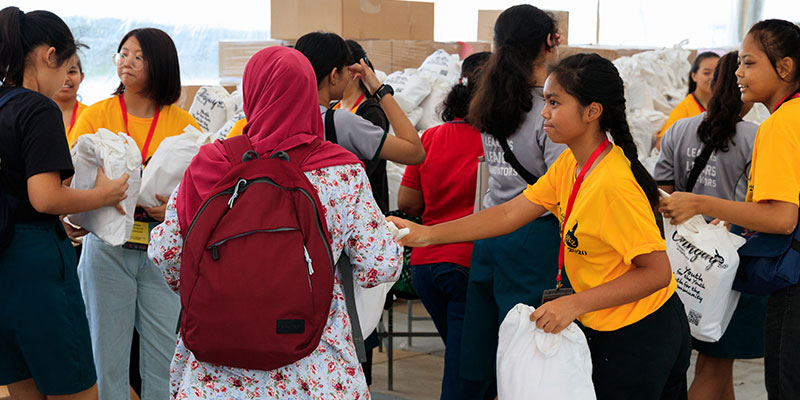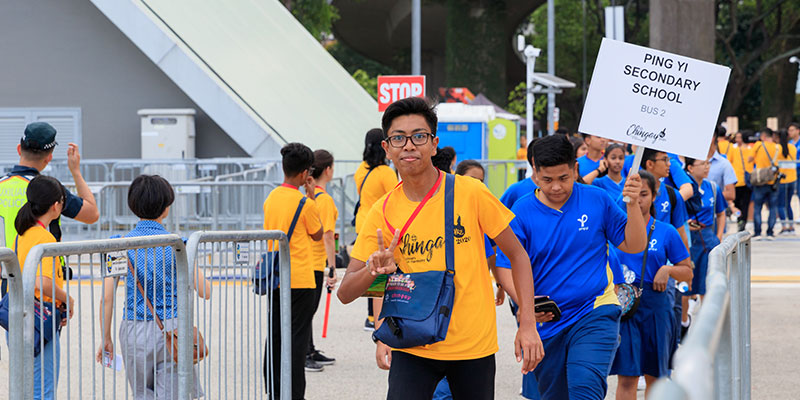In Singapore, Primary School Leaving Examination is considered one of the most essential academic milestones of a child’s schooling journey. However, what comes after the PSLE exam is equally crucial to building and nurturing their character, personality and academic development.
As children leave behind their Primary years and step into their Secondary education, they grow physically, mentally, and academically. Therefore, choosing the right secondary school for your child is crucial. With a plethora of secondary schools to choose from, parents are often caught in a dilemma.
Fret not! Our article lists specific pointers to help shortlist and select your child's ideal secondary school.
Shortlisting Secondary Schools: The Post-PSLE Responsibility
Secondary schools in Singapore are known for their unique educational approaches that aim to maximise the student’s potential. Basically, three criteria will determine where your child will continue their secondary education:
- Their school of choice.
- The number of vacancies available.
- The PSLE score.
Your child is now old enough to decide where they want to study and what course they want to take. Hence it is imperative to include them in your discussion and understand their interests and aspirations regarding their course, careers, and extracurricular activities. You should also consider their learning styles, strengths, weaknesses and habits to help them make an appropriate decision. Also, remember that the seven calendar days following the release of PSLE results are a good time to shortlist the six secondary schools in order of preference.
Now that you've narrowed down your choices, here's what to look for to choose the best one.
Also Read : Simple Strategies to Handle Comprehension Cloze
Picking the Best Secondary School Post PSLE: 5 Critical Criteria
1. PSLE Aggregate Ranges for the Previous Year
In selecting your child's schools from the six choices, you should choose the majority with aggregate ranges that fall within your child's T-score aggregates from the previous year.
The first two choices are very crucial, as the aggregate range serves as a parameter to ascertain your child’s chances of studying in those institutions. Choosing a school whose students have similar academic standards to your child will also be beneficial.
Here’s a tip: Don't miss out on a valuable opportunity by choosing schools with aggregate ranges higher than your child's T-score.
2. Direct School Admission (DSA)
Singapore's Direct School Admission program, or DSA, guarantees admission to secondary schools or junior colleges for students in Primary 6 and Secondary 4. Prior to taking the PSLE, students apply for DSA based on:
- Their athletic capabilities
- Academic achievements.
- Co-Curricular Activities or CCAs
3. The Distance from Home to School
Children are young and in their primary years, and long-distance travel to school can be tiring and time-consuming. However, since they are older, travelling to school will not be a problem for them.Therefore, the distance from home to school is still worth considering because your ward will spend more time in secondary school than they did at primary school. Therefore, ensure they do not waste time or tire out by travelling back and forth to school.
4. Affiliation to Tertiary Education or Junior College
Secondary school is the first step to creating a focused academic path. From here, students move on to their tertiary education levels at Junior College. Your child will receive two precious bonus points if their school is affiliated with a junior college when they apply to a secondary school.
Important tip: When applying for the Joint Admission Exercise, students must indicate the affiliated Junior College as their first or second choice. This is not an opportunity you want to miss!

5. Subject Combinations & CCA’s
Secondary school is where your child gains holistic development that stretches beyond the academic realms. Therefore, check if your school offers valuable programmes, co-curricular activities, etc, to hone your child’s talents. Additionally, ensure that the school culture and environment align with your child’s personality and learning style. The school's curriculum should also be taken into consideration. Check if the school offers the triple pure science combo ( Biology, Physics, and Chemistry) and Pure Humanities group with Physics and Biology.
Look Beyond The T-score to Choose the Perfect Secondary School
A lot depends on your child's PSLE score since students with high scores will be prioritised for secondary schools. Moreover, the secondary school posting process is based on the order of school choices and the available vacancies in each school.
Despite the temptation to select the school your child is qualified for based on their score, you should also remember that there are more dimensions to your choice than a score can reveal. Setting your child up for a successful future begins with an informed choice made at this stage. As soon as your child becomes comfortable with the routines and expectations of secondary school life, the easier it will be for them to thrive in this new academic journey.
So, here’s wishing your child good luck in their secondary school journey!
